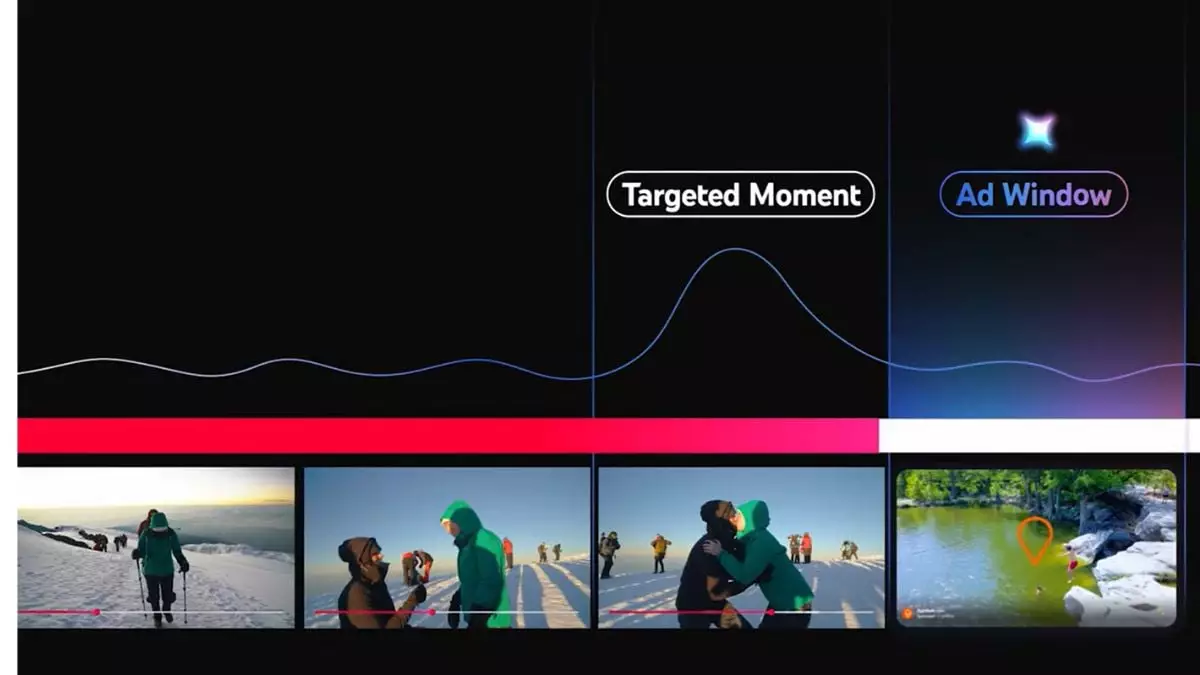In a world increasingly driven by data and engagement metrics, YouTube’s latest initiative, Peak Points, offers a striking innovation for advertisers seeking to capture viewer attention. Unveiled during the Brandcast event in New York, this artificial intelligence-driven feature represents YouTube’s continued commitment to maximizing ad effectiveness and ensuring that brands can connect with their audience at the precise moment of heightened interest. This advancement employs Gemini, a sophisticated AI tool, to analyze video content and determine the optimal points for ad placement.
The Mechanics of Engagement
The fundamental promise of Peak Points lies in its ability to deliver ads at climactic scenarios within videos—moments when viewers are likely most engaged. For instance, in a demonstration, Peak Points timed an ad break immediately before a dramatic marriage proposal scene, illustrating its potential effectiveness. This technology operates on an extensive analysis of video frames and transcripts, identifying key moments that could boost viewer response to advertising. If executed successfully, this could redefine consumer engagement, allowing advertisers to leverage emotional peaks in storytelling to forge connections with viewers.
Ad Placement: A Double-Edged Sword
However, the introduction of Peak Points is not without controversy. While optimizing ad placements enhances potential visibility for brands, it also raises concerns regarding viewer experience. Irrespective of enhanced targeting, interrupting engaging content with ads may lead to audience frustration, particularly if a viewer is anticipating an emotional payoff. Such an approach could undermine the overall viewing experience, leading to viewer dissatisfaction and, ultimately, reduced engagement with both the content and the advertisements. The delicate balance between monetization and user satisfaction is crucial, and YouTube must navigate these waters cautiously.
Revenue Implications for Creators
YouTube’s revenue model heavily relies on advertisements, which are not merely a financial boon for the platform itself but also a vital stream of income for content creators. The mechanics of monetization have evolved significantly, shifting from simple ad placements to complex algorithms that maximize visibility and engagement. With features like Peak Points, the potential to increase ad revenue could lead to a more prosperous ecosystem for creators. Yet, this raises the fundamental question: how will creators adapt to this new landscape, particularly if high ad placements disrupt viewer experience?
Future of Advertising on YouTube
Looking ahead, YouTube plans to expand Peak Points beyond its current pilot phase, rolling it out to various regions as capabilities evolve. With additional features being tested, such as ads during video pauses, the platform is clearly pushing toward a more aggressive advertising model. This trajectory suggests an arms race for viewer attention, where the question remains not just about revenue but about how the evolution of these advertising strategies will influence viewer habits and preferences.
Ultimately, as YouTube forges ahead with Peak Points and other similar innovations, the challenge will be to maintain a balance between effective monetization strategies and preserving the viewer experience, forming an ecosystem that benefits advertisers, creators, and audiences alike.


Leave a Reply